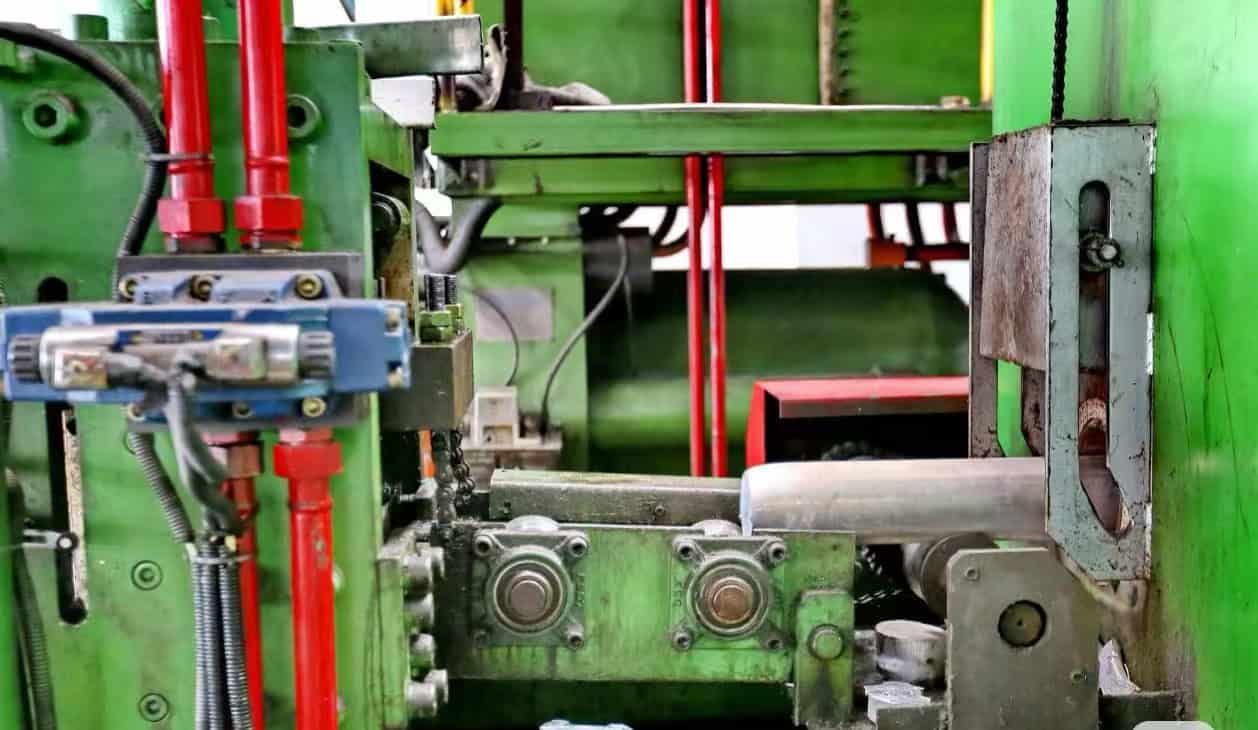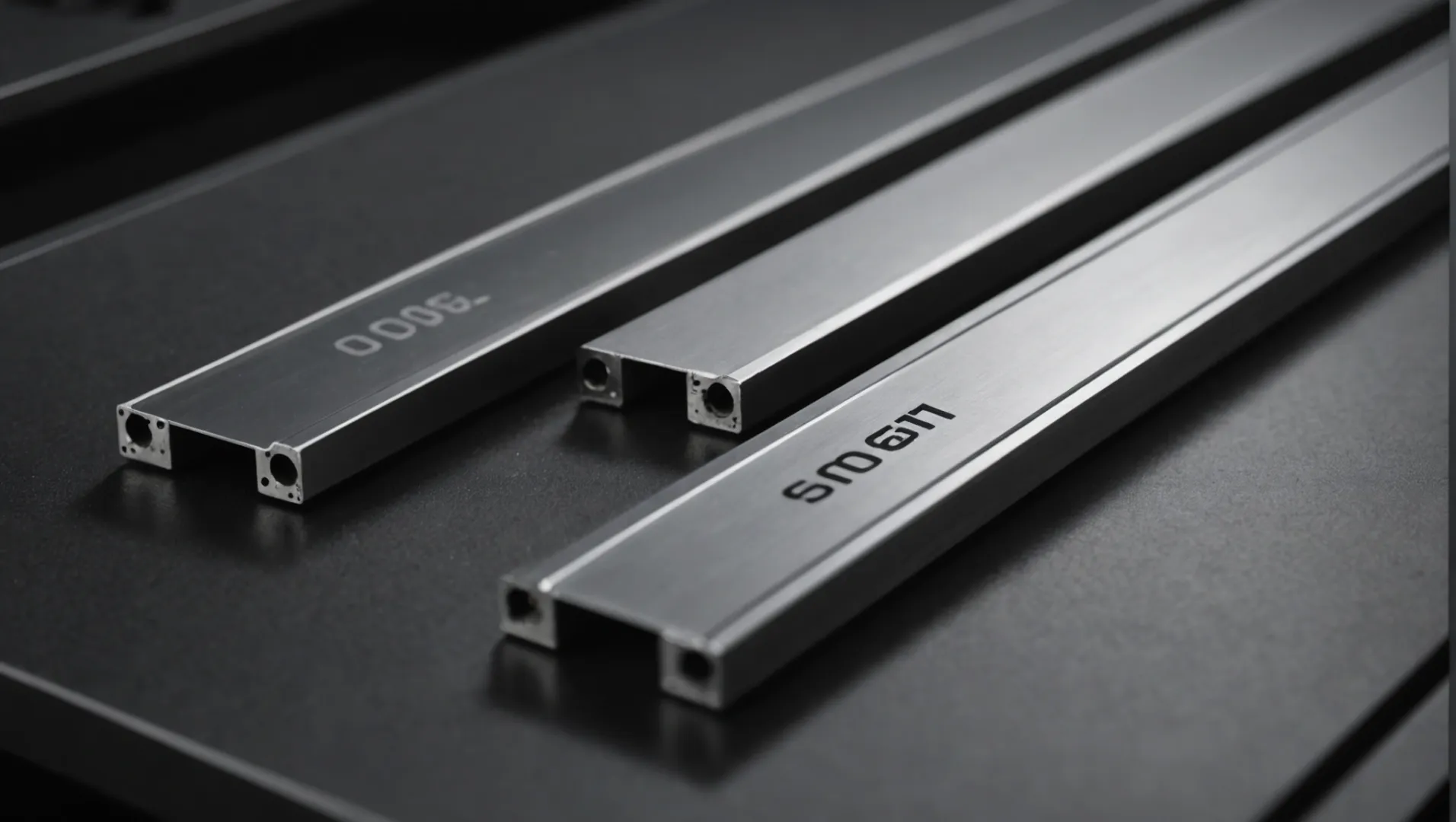What Are the Differences Between Aluminum 6061 and 6063 Profiles?
When it comes to selecting the right aluminum alloy, understanding the nuances between options like 6061 and 6063 can make all the difference!
Aluminum 6061 and 6063 differ mainly in chemical composition and mechanical properties. 6061 is stronger with better corrosion resistance, ideal for structural components, while 6063 offers superior surface finish and extrusion qualities, making it perfect for architectural applications.
Let’s dive deeper into the specifics—exploring applications, production processes, and how these characteristics impact their use in real-world projects.
Aluminum 6061 has higher tensile strength than 6063.True
Aluminum 6061 typically has a tensile strength of ~290 MPa, while 6063 has ~241 MPa.
How Do Chemical Compositions Affect Aluminum Alloys?
The unique chemical composition of aluminum alloys determines their strength, durability, and application suitability.
Chemical compositions in aluminum alloys define their mechanical properties and application suitability. Elements like magnesium, silicon, and manganese influence the alloy’s strength, corrosion resistance, and workability, making each alloy ideal for specific uses.

Influence of Key Elements in Aluminum Alloys
Aluminum alloys derive their properties largely from the mix of elements added during their creation. For instance, magnesium and silicon1 are critical in 6061 alloys, providing a balance of strength and corrosion resistance.
Magnesium and Silicon
In alloys such as 6061, magnesium contributes to increased tensile strength and improved stress corrosion resistance. Silicon works in tandem with magnesium to form magnesium silicide, which enhances the alloy’s ability to undergo heat treatment. This combination is particularly valued in structural components and aircraft parts where durability and strength are paramount.
Conversely, in 6063 alloys, the higher presence of silicon improves extrusion characteristics and surface finish, making it ideal for architectural applications2 like window frames and curtain walls. The subtle differences in these elemental compositions highlight their tailored suitability for diverse industrial uses.
| Element | Alloy 6061 | Alloy 6063 |
|---|---|---|
| Magnesium | Higher | Moderate |
| Silicon | Moderate | Higher |
Manganese and Other Elements
Manganese, although present in smaller quantities, plays a crucial role in influencing strength without compromising ductility. In 6063 alloys, manganese helps stabilize the grain structure, enhancing its mechanical properties and resistance to cracking during processing.
Additionally, trace elements like copper and zinc can further affect the hardness and resistance to wear, though they are typically controlled to ensure optimal performance characteristics are maintained across applications. Exploring these elements offers insights into the meticulous balancing act required to produce high-quality aluminum alloys.
Impact on Production Processes
The chemical composition not only affects the alloy’s properties but also its production process. For instance, the 6061 alloy’s robust composition demands precise control during machining to avoid complications due to its higher strength. On the other hand, 6063’s composition allows for easier manipulation, supporting complex shapes and designs.
Understanding the deformation characteristics3 of these alloys during production highlights the importance of their chemical makeup in determining ease of manufacture and finished product quality.
Magnesium increases tensile strength in 6061 alloys.True
Magnesium is known to enhance the tensile strength of 6061 aluminum alloys.
Silicon decreases corrosion resistance in aluminum alloys.False
Silicon, especially with magnesium, enhances corrosion resistance in certain alloys.
What Are the Key Mechanical Differences?
Understanding the mechanical differences between aluminum 6061 and 6063 can significantly influence your material choice.
The key mechanical differences between aluminum 6061 and 6063 are in their tensile strength, yield strength, and elongation. 6061 boasts higher tensile and yield strengths, making it suitable for structural applications, whereas 6063 provides better elongation and impact resistance, ideal for architectural uses.

Tensile and Yield Strength Comparison
The mechanical properties of aluminum alloys, such as tensile and yield strength, play a critical role in determining their applications. Aluminum 6061 has a higher tensile strength compared to 6063, with a typical tensile strength of around 290 MPa (megapascals) for 6061-T6, versus approximately 241 MPa for 6063-T6. This difference makes 6061 preferable for structural components4, where strength is paramount.
Yield strength follows a similar trend. For instance, 6061-T6 exhibits a yield strength of about 276 MPa, whereas 6063-T6 offers around 214 MPa. The higher yield strength of 6061 makes it more resistant to deformation under stress, an essential characteristic for load-bearing parts.
Elongation and Impact Resistance
While 6061 excels in strength, 6063 aluminum alloy is superior in terms of elongation and impact resistance. Elongation refers to the alloy’s ability to stretch before breaking. With an elongation percentage of roughly 12% for 6063-T6 compared to about 10% for 6061-T6, 6063 can absorb more energy before failing, making it suitable for applications requiring flexibility and impact resistance.
This property makes 6063 an excellent choice for architectural applications like window frames and curtain walls, where a combination of formability and aesthetics is desired.
Surface Finish and Extrusion Qualities
Another mechanical difference lies in the extrusion qualities and surface finish. Aluminum 6063 offers a superior surface finish due to its better extrudability. This quality is crucial for architectural designs5, where appearance plays a significant role. Additionally, the extrusion process for 6063 is more efficient, allowing complex shapes to be formed easily.
Summary Table of Mechanical Properties
| Property | 6061-T6 | 6063-T6 |
|---|---|---|
| Tensile Strength | ~290 MPa | ~241 MPa |
| Yield Strength | ~276 MPa | ~214 MPa |
| Elongation | ~10% | ~12% |
| Impact Resistance | Moderate | High |
| Surface Finish | Good | Excellent |
Each alloy’s unique mechanical properties offer distinct advantages that make them suited for specific applications, ensuring both durability and performance in their respective fields.
Aluminum 6061 has higher tensile strength than 6063.True
6061-T6 has a typical tensile strength of 290 MPa, while 6063-T6 is 241 MPa.
Aluminum 6063 offers better surface finish than 6061.True
6063 provides a superior surface finish due to its better extrudability.
In Which Applications Do Aluminum 6061 and 6063 Excel?
Understanding where aluminum alloys 6061 and 6063 excel can enhance performance and project outcomes.
Aluminum 6061 excels in aerospace, automotive, and marine applications due to its strength and corrosion resistance. Meanwhile, 6063 is preferred in construction, furniture, and transportation for its excellent extrusion properties and surface finish.

Aerospace Applications
Aluminum 6061 is a top choice in the aerospace industry, known for its light weight combined with high tensile strength and excellent corrosion resistance. These attributes make it ideal for manufacturing aircraft parts, missiles, and satellites. Its robustness ensures that components endure the demanding conditions of aerospace environments, such as extreme temperatures and high pressures.
Automotive Industry Use
The automotive sector extensively utilizes aluminum 6061 due to its light weight and strength, which contribute to enhanced fuel efficiency and safety. It’s commonly used in making frames, wheels, and engine parts. This alloy’s ability to withstand harsh environments without corroding significantly increases the durability and lifespan of automotive components.
%[Aluminum for new energy vehicles](https://sinoextrud.com/wp-content/uploads/1371728717899_.pic_.jpg”Aluminum for new energy vehicles")
Marine Applications
In marine environments, aluminum 6061 is favored for its exceptional corrosion resistance. It is used in constructing hulls, masts, and other marine structures, ensuring longevity even in salty sea air. This alloy helps maintain structural integrity over time, reducing maintenance needs and costs.
Construction Applications
Aluminum 6063 shines in the construction sector, primarily due to its excellent surface finish and extrusion capabilities. It’s widely used for architectural purposes such as window frames, door frames, and curtain walls. Additionally, its capacity for anodizing enhances aesthetic appeal and durability, making it a favorite for decorative applications.
Furniture Manufacturing
The furniture industry often chooses aluminum 6063 because it allows for intricate designs due to its superior extrusion properties. Its lightweight nature does not compromise strength, making it ideal for table stands and chair legs. The alloy’s durability ensures furniture remains functional and visually appealing over time.
Transportation Sector
In transportation, aluminum 6063 is valued for crafting structural parts of vehicles and railway carriages. Its balance of strength and flexibility supports the construction of lightweight yet durable transportation solutions. Explore more about aluminum in transportation applications6. The material’s corrosion resistance also ensures longevity and safety across diverse transportation environments.
Aluminum 6061 is ideal for aerospace applications.True
Its strength and corrosion resistance make it suitable for aircraft parts.
Aluminum 6063 is mainly used in marine environments.False
6063 is primarily used in construction, not marine applications.
How Do Production Processes Influence Alloy Performance?
The production process plays a pivotal role in determining the performance characteristics of aluminum alloys.
Production processes impact alloy performance by affecting properties like strength, machinability, and corrosion resistance. Differences in cooling methods, aging treatments, and deformation controls lead to variations in the final product, influencing its suitability for specific applications.

The Role of Cooling Methods
Cooling techniques are critical in shaping the properties of aluminum alloys. For instance, the 6061 alloy7 typically undergoes water cooling, resulting in a higher deformation coefficient and increased hardness. This makes it ideal for applications requiring high strength, such as aerospace and automotive industries.
On the other hand, the 6063 alloy uses air cooling during the T5 state, which provides better control over the deformation process. This results in a superior surface finish, making it more suitable for architectural applications like window frames and door frames.
Aging Treatments and Their Effects
Aging treatments are another crucial step in the production process that significantly influences alloy performance. Artificial aging is commonly employed to enhance strength and corrosion resistance. The 6061 aluminum alloy benefits from such treatments, gaining properties that make it viable for demanding environments like marine and construction fields.
Conversely, while 6063 also undergoes artificial aging, its focus is on achieving a balance between strength and malleability, allowing for more intricate design possibilities in furniture and transportation applications.
Deformation Controls: Managing Material Properties
Deformation characteristics are pivotal in determining how an alloy can be machined and used. The production of 6061 alloys involves managing a high deformation coefficient, which requires careful control to maintain material integrity during manufacturing.
In contrast, the 6063 alloy’s smaller deformation coefficient simplifies production control, enhancing its machinability and making it more adaptable for uses requiring detailed extrusion processes.
| Alloy | Cooling Method | Deformation Coefficient | Primary Applications |
|---|---|---|---|
| 6061 | Water Cooled | High | Aerospace, Automotive |
| 6063 | Air Cooled | Low | Architectural, Furniture |
Understanding these production nuances helps manufacturers and engineers choose the right alloy tailored to specific project needs. By analyzing cooling methods, aging treatments, and deformation controls, they can optimize performance characteristics to match application demands.
Cooling methods affect alloy deformation coefficients.True
Cooling methods influence the deformation coefficient, impacting material properties.
6061 alloy uses air cooling for improved surface finish.False
6061 alloy uses water cooling, not air cooling, for increased hardness.
Conclusion
Choosing between aluminum 6061 and 6063 depends on your specific application needs. Reflect on your project’s requirements to ensure you select the optimal alloy for performance and longevity.
-
Explore how magnesium and silicon enhance alloy strength and durability.: AlMgSi is one of the aluminum alloys with medium to high strength, high fracture resistance, good welding suitability, corrosion resistance and formability. ↩
-
Discover why 6063 is preferred for architectural projects.: 6063 aluminum is the most common choice for extrusion with its excellent extrudability, high corrosion resistance, and ability to be formed into complex shapes. ↩
-
Learn how composition affects production processes and material handling.: The deformation behaviour of samples during tensile tests was monitored for two alloy conditions (soft-annealed and hard- deformed). ↩
-
Discover why 6061 is preferred for structural components.: For that reason, manufacturers use it to make steel frames, irrigation tubing, storage tanks, and truck frames. ↩
-
Explore the benefits of using 6063 in architecture.: It is a medium strength alloy, which is used for applications such as railing, window frames, door frames, roofs, balustrading, sign frames, shop fittings, … ↩
-
Discover how aluminum 6063 enhances transportation solutions with lightweight durability.: You’ll also find it used in aerospace, automotive, transportation, packaging and sports. Keep reading to learn more about the uses and characteristics of 6063. ↩
-
Explore how water cooling enhances 6061 alloy’s strength for demanding applications.: Underwater friction stir welding of AA6061-T6 was carried out in order to improve mechanical properties of fabricated joints in butt mode configuration. ↩




